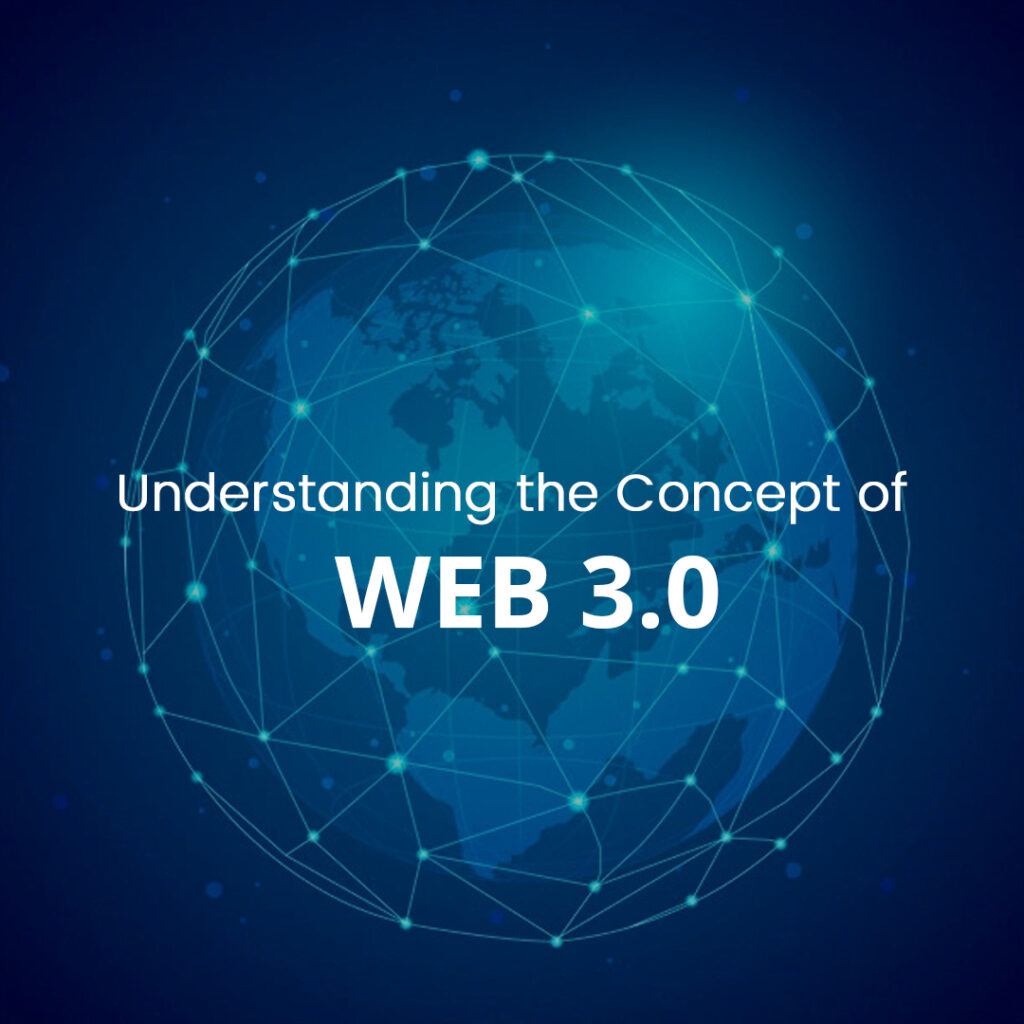Web 3.0 is the third generation of the World Wide Web to use web technologies and develop applications that run on top of them. It sits between the first-generation WWW, founded in 1991 at CERN and moved online in 1993, and today’s second-generation WWW. At this point, there are many different Web 3.0 definitions for what is contributing to technology innovation today.
In 2004, Google presented the Web 2.0 concept, suggesting that people are more empowered to create online because of better tools and services. This movement is closely aligned with the dot-com bubble based on the idea that new technologies can change business models. The term was then invoked in 2005 by Darcy DiNucci, who describes the emergence of Web 2.0 as a new platform for economic and social interaction.
In October 2008, experts defined Web 3.0 as an evolutionary phase in the Web where users can control their own experiences through personalization, collaboration, and real-time communication. The term “Web 3.0” was used for the first time in November 2008 by Tim O’Reilly to describe directions for the technological evolution of the World Wide Web.
What Is Web 3.0?
The term web 3.0 has been used to describe the future of the Web as Google publically describes it in their Web 3.0 study. At its core, this means using new technologies and services for a more collaborative and social experience, not just on the Web but also in our real lives.
Web 3.0 is to create a more transparent and fair network in which anybody can participate without fear of losing their privacy or security.
What Is The Difference Between Web 1.0, Web 2.0, And Web 3.0?
Web 1.0 was the first version of the Internet, and it was text-based. This made it difficult for users to exchange small amounts of information or send large files over the World Wide Web.
Web 1.0 Characteristics:
- The server’s file system provides the content.
- The pages were static.
- Aligning components on the page with tables and frames
- Pages created with the Common Gateway Interface (CGI) or on the server-side
Web 2.0,known as Social Web, and Web 2.0 sites use web technologies to create collaborative, user-generated content and interactive features such as social bookmarking, blogs, and wikis.
Web 2.0 Characteristics:
- Allows users to classify and arrange information at their leisure
- The content is dynamic and user-responsive.
- Allows the flow of information between the site owner and the user through comments and other metrics.
- Has built-in APIs built that allow for self-use
- Allows for a wide range of user options
Web 3.0 brings the power of Web 2.0 and enhances it with Web 3.0 services and technologies. It is a more intelligent system, which is tightly integrated with large data stores, analytical processing, and distributed AI to make all users’ online experiences easier, faster, and cheaper.
Web 3.0 technologies are making all data available to everyone. The concept of cloud computing is the foundation for Web 3.0 technologies and Web 2.0 technologies.
The Main Features of Web 3.0
The main features of Web 3.0 are as follows:
1. Semantic Web:
The semantic web is a part of the 3.0 applications program. The primary focus of this part is on providing machine-readable information.
The creation of Web 3.0 is creating the ability for everyone to make data and computing power available, in turn allowing everyone to have access to the same services. Semantic technologies that help this effort are RDF, OWL, and SPARQL (Schema-Based Query Language).
2. Usage of the Cloud:
Web 3.0 utilizes the full functionality of cloud computing for the different applications that come with it, either directly or by creating interfaces for smoother interaction with the clients and users. The term cloud can use in a very broad sense which includes utility computing, infrastructure services, SaaS (software as a service), PaaS (platform as a service), and Iaas (Infrastructure as As a Service).
3. Web 2.0 + AI:
Web 3.0 uses artificial intelligence to improve all services provided by Web 2.0 and make them more intelligent. It also combines artificial intelligence with the latest trends in cloud computing, big data, social media, mobility, and APIs.
4. Connectivity:
Constant connectivity is another important feature of Web 3.0. Through this, people will be able to connect through telepresence and video conferences.
The concept behind the connectivity is to enable the easy updating of huge amounts of data through a network. Moreover, the network should be able to receive data from various sources and reliably handle that data.
5. Ubiquitous Computing:
Ubiquitous computing is a technology that enables the seamless exchange of information between computers and other hardware devices.
6. Evolution of Smart Devices:
Web 3.0exploits the full functionality of smartphones, mobile devices, and tablets to reach different users in a new way, providing dynamic content and real-time services. Those devices are normally used for accessing web pages, so we can achieve a better user experience based on context by using them for other purposes.
7. Big Data:
Web 3.0 utilizes big data for analytical processing instead of using web content and allows a Web 3.0 application to process information from all the web applications stored in large databases that extend and scale horizontally.
8. SDKs:
Web 3.0 is the creation of applications with a more advanced user interface that can use in standard Web 2.0 applications. At the same time, it allows developers to create advanced applications using all the features provided by Web 3.0 technologies.
9. Integration with Mobile Environments:
Web 3.0 integrates mobile and web applications with a common interface to achieve the best user experience.
10. In Support of Self-Sovereign Identity:
It allows users to use self-sovereign identity in services relatedto their identity, for example, to access certain information or offer certain services. This will improve the current personal data management situation and make it possible to provide self-sovereign identities across different platforms and applications.
11. Nontraditional Web Applications:
This part consists of data mining, online gaming, virtual worlds, and other applications that are not traditional websites or web services with a graphical user interface (GUI).
12. Increased Data Access:
With Web 3.0 technologies, users can store information on existing web servers and create their web servers with large amounts of disk space for storage or memory for caching near any availableinternet connection.
Web 3.0 also allows the creation of an interactive application that is dynamic and adaptive to the user’s needs, which means it can change based on user interactions, creating an application that is personalized and adapts itself to the user.
Also,it is driven by the integration of intelligent devices (both physical and virtual) with our physical environment (our daily lives), making them part of our everyday lives by providing better experiences when we usethem.
Why Is Web 3.0 Important For Businesses?
Web 3.0 has the potential for significant business gains, both in revenue and improved customer experience. Here are some examples of the benefits:
# Social Commerce
An increasing number of companies are using social commerce to drive growth. For example, by using a service like Facebook Connect, customers can effortlessly share their shopping experience on this social network with their friends and family to gain more exposure and benefit from word-of-mouth marketing.
# Real-time Personalization
Today, users can easily browse a company’s website and compare products with each other or compare different prices or offers. But for the coming generations, it will be about real-time personalization. Users will interact with a product, use it, and then automatically receive a discount on buying that product.
# Interoperability
As we move further into Web 3.0, data will be stored and analyzed in a highly interoperable fashion. This is imperative for any industry to remain competitive.
# Customer Engagement
Companies can engage and win over new customers by creating intelligent systems that predict customer needs. Companies can also use today’s analytics technologies to offer personalized content to their customers, which enhances revenue growth by allowing them to make better sales calls and create deeper customer relationships.
Web 3.0 Examples
Apple’s Siri, Wolfram Alpha, Amazon’s Mechanical Turk, Google Earth, and the concept of crowdsourcing have all been cited as examples of Web 3.0 applications. Google’s Android mobile operating system has also been called a Web 3.0 application because it allows users to access web content via their mobile phone on the Internet.
Some also see VoIP and telepresence applications like Skype, which combine real-time communication with Web 2.0.
Wolfram Alpha and Apple’s Siri are the best 2 examples of Web 3.0 programs that can summarize enormous volumes of data into knowledge and beneficial actions forindividuals.
End-Note
Web 3.0 is a next-generation Internet that offers new technologies, applications, and services. Although the concept of Web 2.0 has been much-publicized, the arrival of Web 3.0 is still not clear and has received little press coverage until now. The term “Web 3.0” does not have a universal definition, and each company seems to have its definition of this term, which confuses understanding the real meaning of this term.
However, we are still in the early stages of the development of Web 3.0 applications. There is also a requirement for widespread adoption of Web 3.0. It could take a year or ten to transform the web landscape entirely. Even so, it’s well worth the wait for the time being!











